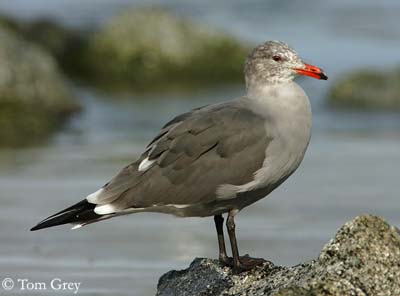
Heermann’s Gull
Larus heermanni
Charadriiforme Order – Laridae Family
BIOMETRICS:
Length : 46-53 cm
Wingspan : 104-115 cm
Weight : 370-640 g
DESCRIPTION:
Heermann Gull adult has white head, streaked dark in winter.
Fr: Goéland de Heermann
All : Heermannmöve
Esp : Gaviota Mexicana
Ital : Gabbiano di Heermann
Nd : Heermann-meeuw
Sd : Vithuvad mas
Photographs by Tom Grey
His website: Tom Grey's Bird Pictures
Photographs by Tom Merigan
His website: Tom Merigan’s Photo Galleries
Text by Nicole Bouglouan
Sources:
HANDBOOK OF THE BIRDS OF THE WORLD Volume 3 by Josep del Hoyo-Andrew Elliott-Jordi Sargatal - Lynx Edicions - ISBN : 8487334202
FIELD GUIDE TO THE BIRDS OF NORTH AMERICA by National Geographic Society - National Geographic Society - ISBN: 0792274512
All About Birds (Cornell Lab of Ornithology)
Bird Web (Seattle Audubon Society)
What Bird-The ultimate Bird Guide (Mitchell Waite)
Wikipedia (Wikipedia, The Free Encyclopedia)
BirdLife International (BirdLife International)

Body is grey: upperparts are dark grey, and underparts light grey, becoming whitish on upper breast and neck. Tail is black with white terminal band, and we can see white borders on wings.
Red bill is strong with black tip. Eyes are black with red eye-ring. Legs are blackish.
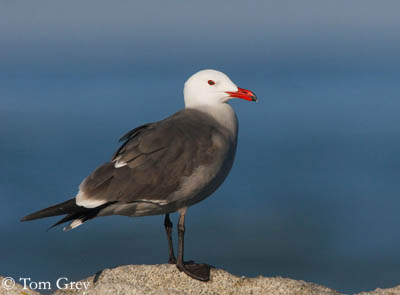
Both sexes are similar, but male is slightly larger than female.
First winter has dark brown body, without any contrasting white stripe.
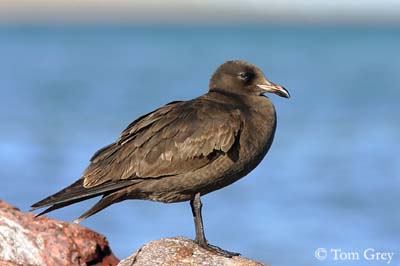
Second winter is browner than adult, with two-toned bill and tail band buff.
Young birds need four years to reach their adult plumage.
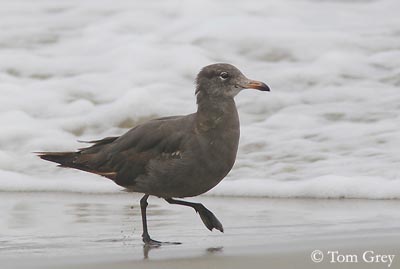
VOICE: SOUNDS BY XENO-CANTO
Heermann Gull is silent out of breeding period. Its call is a nasal “aow-aow-aow”, and also a “kwack” and some nasal high-pitched “weee”.
HABITAT:
Heermann Gull is a coastal bird, frequenting beaches, rocky shorelines, estuaries and lagoons. It nests on arid offshore islands.
It winters out to sea or along the coasts, but not inland or rarely.
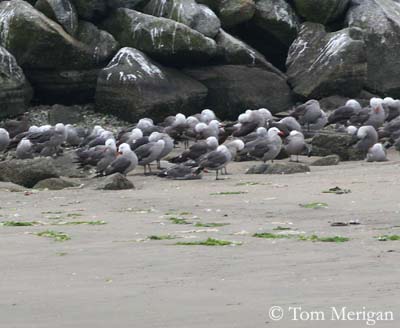
RANGE:
Heermann Gull breeds off the west coast of Mexico. Non breeding birds may remain along Californian coasts.
It winters along Coasts of California, and northwards to British Columbia.
BEHAVIOUR:
Heermann Gull frequently harasses other birds for food. Brown Pelican often is its victim, but also marine mammals.
This species is aggressive, and often harasses other birds. Heermann Gull may try to steal fish directly from the pouches of Brown Pelicans.
To feed, it picks food from the surface, but it may dive into water to pursue fish. It hovers and dips on the waves, catching small fishes near the surface.
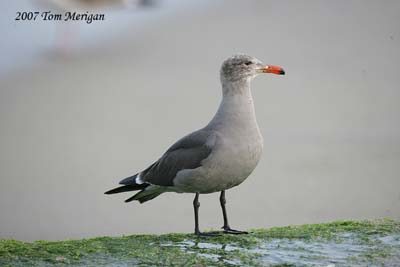
On their breeding grounds, they follow fishing boats and farther north, they scavenge along beaches, and they also feed on Herring Gulls eggs.
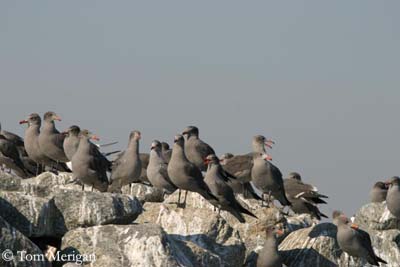
Heermann Gulls nest in colonies on the ground. They roost in large flocks, but flies in small groups or solitary.
FLIGHT:
Heermann Gull has a buoyant flight, with steady fast wing beats.
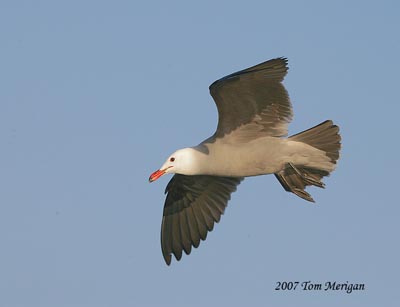
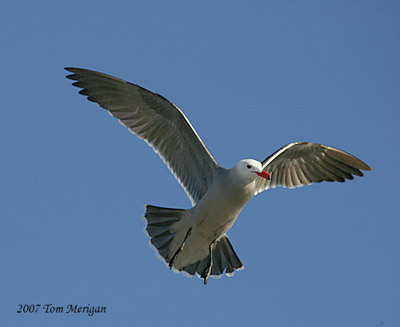
REPRODUCTION:
Heermann Gull nests on the ground, or between rocks and boulders.
Nest may be built with sticks and small rocks, with some feathers within, but it also may be a single depression scraped in the ground, lined with some shells or sticks, or without lining.
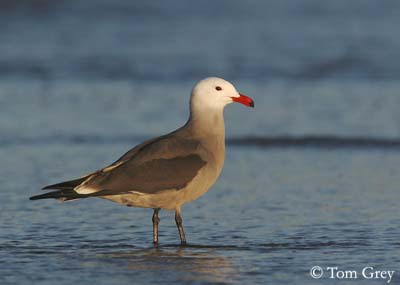
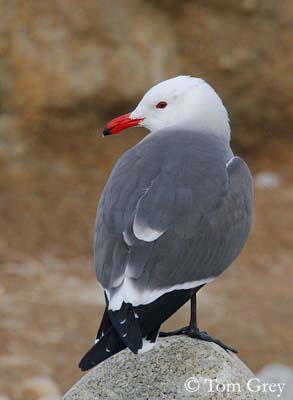
Female lays 2 or 3 eggs of varied colours, patterned with dark spots. Incubation lasts about 4 weeks, by both parents. Chicks are fed by both adults.
This species produces only one brood per season.
DIET:
Heermann Gull feeds mainly on marine creatures. They also consume eggs of other species, refuse and carrion, but less than other gull species.
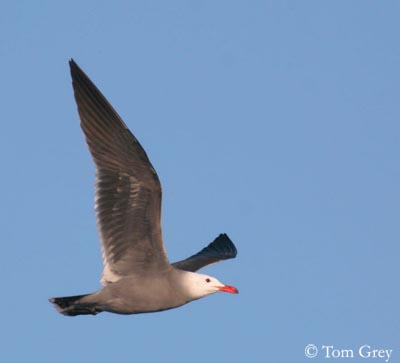
PROTECTION/ THREATS / STATUS:
Heermann Gull is vulnerable to disturbances on nesting areas.
The Island Isla Rasa, off Baja California, was declared as a sanctuary in 1964.